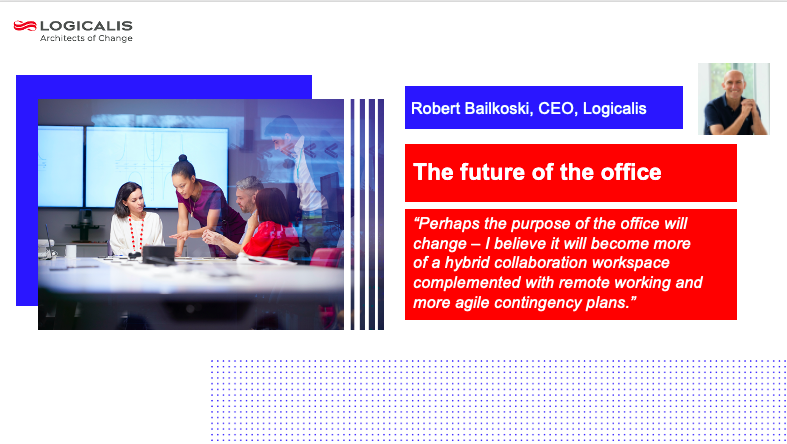The ability to work remotely has been a necessity for a high number of businesses during the pandemic. In fact, recent research revealed that at the height of the lockdown, 46% of employees in the UK were working from home. Many organisations have been surprised at the speed and efficiency of the workforce transformation, moving from an office to working remotely in a matter of days.
The new working environment has drawn on a number of benefits, including higher productivity, closeness to
family, time for physical exercise and no daily commute leading to lower stress and lower carbon emissions. These rewards have led several high-profile organisations, including Twitter and Fujitsu, to offer all employees the right to work remotely indefinitely.
Clearly the forced remote working experiment has been a success, however working from home has not been without its challenges. We can all attest to the various interruptions from family members, postal staff and pets during video calls. In addition, technology issues including poor bandwidth and lack of cybersecurity, increased fatigue and an inability to separate work from personal life are obstacles we have all faced in our remote offices.
In Britain, the government has once again urged us to work from home to prevent the further spread of the virus and combat a second wave. Regions around the world are also going in and out of local lockdowns, stopping employees from returning to the workplace. This leaves us to consider, how does this prolonged period of remote working impact the future of the office?
Remote work is here to stay
Many of my conversations with our customers, partners and colleagues have focused on what the office environment will look like beyond the pandemic. Remote work, in some form, is definitely here to stay. In fact, a recent Gartner survey revealed that more than 80% of company leaders plan to allow remote work at least part time, even once it becomes safe to return to the office.
Before the pandemic, Logicalis was planning to move to new headquarters in September 2020, but our plans were
quickly put on hold. Since then, we have collectively decided to work remotely until at least the end of the calendar year. We are embracing the flexible work model and its many advantages including a more diverse workforce and fewer geographical restrictions to hiring. As we continue to work remotely, we are adopting a more empathetic, people-first approach and increasing our efforts on team collaboration to ensure our employees, the Architects of Change, remain connected.
Hybrid workplaces
At Logicalis, we have also seen an improvement in employee satisfaction levels during the remote working period. Global teams have adjusted to the new reality of working from home and many employees are in no rush to return to the office. Indeed, 71% of employees and managers wish to continue working from home at least part time.
But despite most workers enjoying their remote working arrangement, I do not think the office will disappear for
good, nor should it. Humans have a need to interact in person – we are social animals after all. Perhaps the purpose of the office will change – I believe it will become more of a hybrid collaboration workspace complemented with remote working and more agile contingency plans.
When we do eventually head back to the office, full-time or part-time, workers may likely return with an even
greater desire for meaningful connections. Office spaces are therefore more likely to accentuate the collaborative aspects of the modern working world as it becomes a place for internal gatherings and meetings with customers, vendors or departmental teams. The days of trekking to an office because ‘that’s where I work’ are over. It will be a vibrant destination, full of renewed purpose rather than a daily default location. Rather than ‘new normal’, think 'different normal'.

